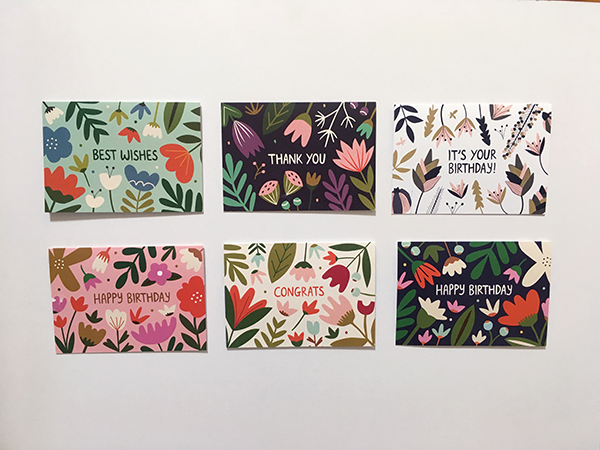Snippets: Chats With Creatives, Textile Designer Beck Ng – Series 3, Snippet 1
Snippets. Chats with Creatives.
Here at Digital Fabrics we love everything print, pattern and colour and we love to know what makes print designers tick.
This series we are focusing on textile designers as our creatives to get into the nitty gritty of the thing we love the most, textiles and surface design! We have asked a different set of questions relative to this and as always we hope to inspire others by sharing snippets of these creative stories.
Today we are chatting to Beck Ng from Fabric Drawer, a Melbourne based surface designer and maker who has a passion for pattern! She creates prints often inspired by nature and the things she has seen and done throughout her life, these are available for license or purchase. She also makes things from her printed fabrics and sells them at markets and online here
We love her style, whimsical and folk like florals that look great on our favourite thing, fabric! Her work has been featured in lots of awesome places including the Print and Pattern website, the latest Flow Calendar and she is currently a finalist in the Frankie Good Stuff Awards so you can vote for her here!
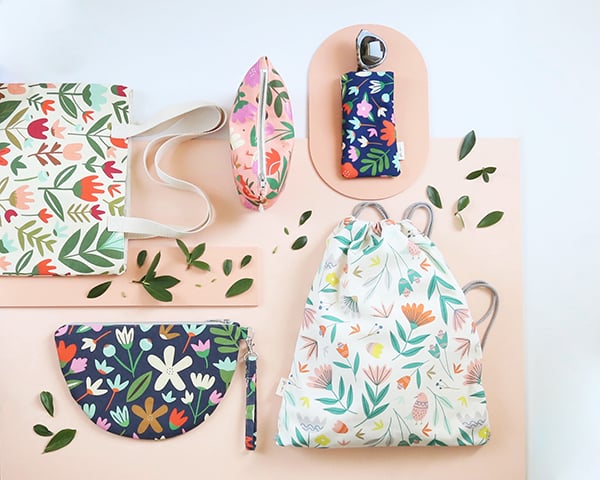 Tell us a bit about yourself, your brand/label name what your creative practice is, how and when you began:
Tell us a bit about yourself, your brand/label name what your creative practice is, how and when you began:
I’m a designer, maker, mum and pattern lover from Melbourne. My creative journey started in graphic design, but took a side step into patterns when I started a textiles course. I created the label Fabric Drawer (in 2012) to showcase my love of patterns, for licensing and also for use on my own range of products. I started out designing patterns and didn’t begin making my own products until a few years later.
Having my own business allows me to create my own style of work and turn it into a product that people can purchase and take home (or gift!). So far, I make each and every product myself and have been committed to sourcing materials locally where possible. I also enjoy the process of licensing my work, which means I work with clients to have my designs on their products. I really enjoy being involved in all facets off my creative business; it’s a never ending learning process!
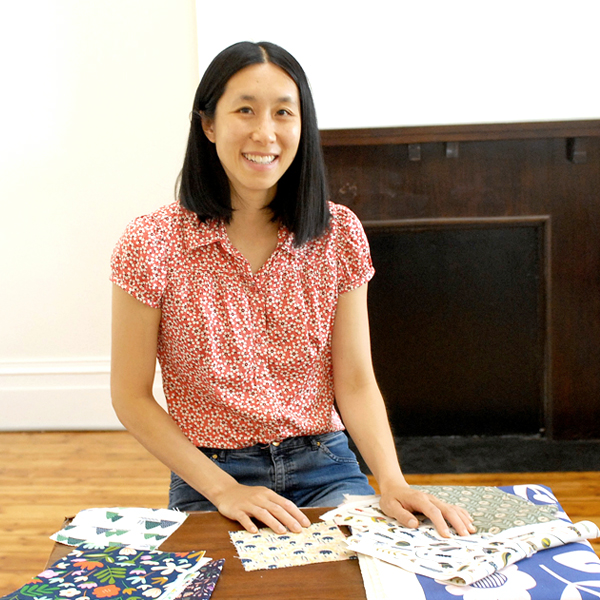 Where do you call home and what is your favourite thing about where you live?
Where do you call home and what is your favourite thing about where you live?
I live in Melbourne, close to the city and I enjoy the convenience of being able to walk, bike or tram to most places.
What 3 words best describe your creative style.
Inspired by nature
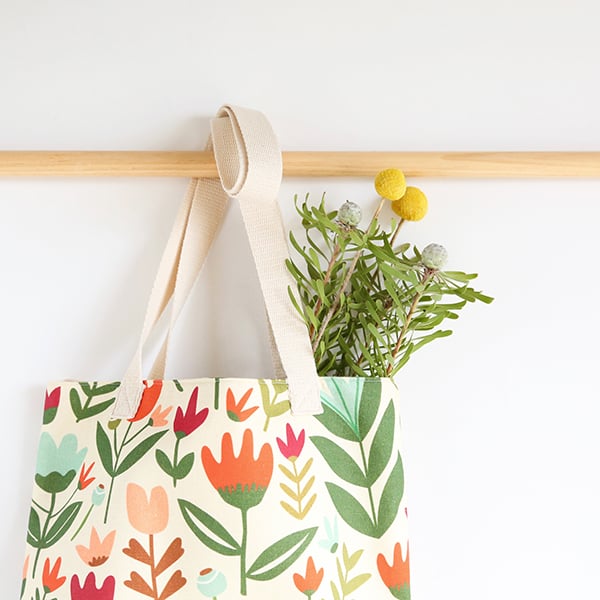 Tell us a bit about what kind of studio, space or practice you run? Do you sell online or license your prints, do you do commissions or lots of freelance and what do you like doing the most?
Tell us a bit about what kind of studio, space or practice you run? Do you sell online or license your prints, do you do commissions or lots of freelance and what do you like doing the most?
My creative business does a little bit of everything. I license my designs, make products from my work and sell at markets around Melbourne.
I started out in art licensing through an art agent in America. They represented me for almost 3 years and I was fortunate to have my work sold/licensed on products such as greeting cards, party ware, gift bags and wall art. I have learned a lot about the art licensing industry and am finding it an area I’d like to get more and more into. It’s still a big learning curve for me and it’s certainly challenging finding my own licensing opportunities without an agent.
Outside of the licensing, I have made my own collection of products from my patterns. I’ve been doing this for about three years now, starting out very small by sewing a few products and selling them at markets. Initially I didn’t sell very much, but as I kept going, I started to sell a bit more at each market and have now been able to be part of some of the larger design markets in Melbourne. I sew everything myself, which is a very time consuming process, but has been the best way to make small quantities and keep things local for now.
I find licensing and making products both a rewarding process and I think that having my own range of products has helped the licensing side of the business.
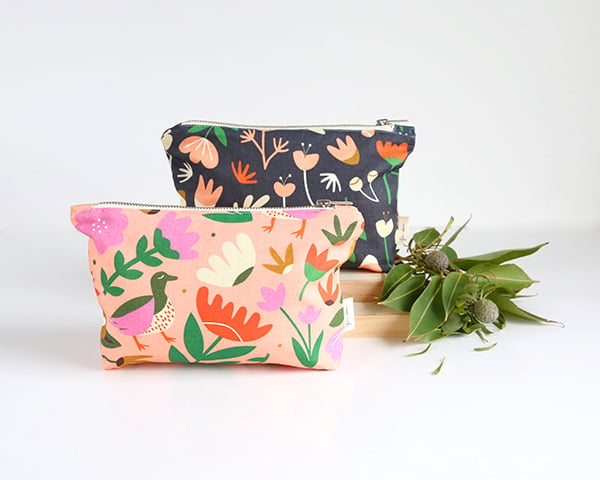
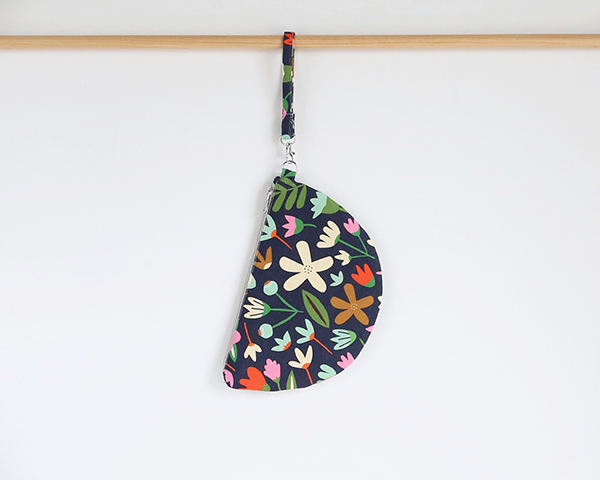 Tell us about your creative space, what are your tips for keeping a creative studio space organised? What would your dream space look like?
Tell us about your creative space, what are your tips for keeping a creative studio space organised? What would your dream space look like?
To be honest I don’t have much of a creative space. I have seen pictures of other creative studios, and I love the idea of a light filled space, with your computer on bare desk and pieces of your work and work that inspires you decorated around the wall and studio. In reality, I work in my bedroom, lounge room, dining room (I have a laptop) and small nook in a room (for sewing). It’s not very glamorous, but I guess I wanted to share that so people realise you don’t need the perfect set-up to get started and be creative. Sometimes constraints are needed so you can focus on creating. That said, I wouldn’t mind the type of studio space I described above!
When designing a new surface design collection or set of work what is your process and how long might you spend on this?
I keep it pretty simple and start out my patterns by drawing on regular plain white paper with a pen or pencil. It’s good to have a bit of a story or theme in mind, but I don’t always start that way. When I feel like I have sketched up enough motifs, I photograph them and bring them into my computer to start tracing them in Illustrator. I love using Illustrator because of the flexibility it allows to scale and change colours. From there I start working on the hero print, then build out the secondary and simple coordinates. I try to have a minimum of 5 patterns per collection. I have been known to put together a collection within a couple of weeks when I’m under a bit of a deadline, but it could take a month or months if I take my time.
Which part of the creative process is your favourite and why?
I really enjoy the process of piecing a surface pattern together. It’s feels a bit like a jigsaw puzzle; fitting each motif into the right space and then working on the right colour palette.
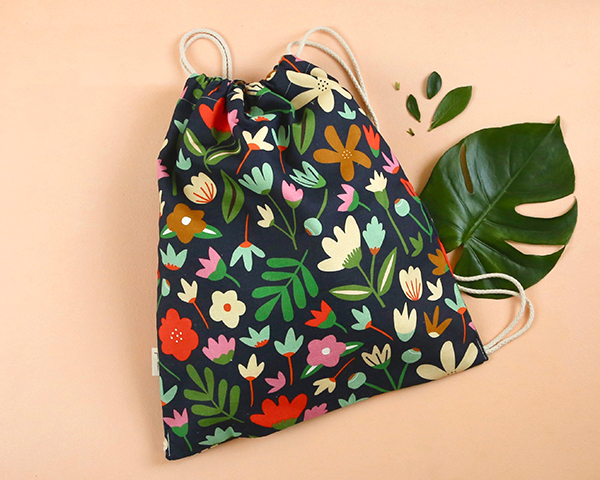 What would you say is the biggest challenge when running your own creative business, what is your favourite and least favourite part?
What would you say is the biggest challenge when running your own creative business, what is your favourite and least favourite part?
Time! There is never enough time. I don’t work on my business full-time and never have. I have a part-time job as a graphic designer, sometimes I freelance too and have two young girls to look after. Usually I would have to work on my creative stuff when the kids are in bed, or if I have any small snippets of time throughout the day. I would love to focus on my creative business more, but the reality is I still need some bread and butter income.
My favourite thing about having my own business is that I can create whatever I like. As a graphic designer, you’re bound by what the client wants, so having my own work gives me the freedom to express myself creatively.
My least favourite part is social media. I feel like it’s a bit of a time suck, and am spending more time on it then I’d like. I do try to post regularly to share my work (because opportunities can come out of social media) and build my brand, but I kinda wish I didn’t have to.
What advice would you give an aspiring textile designer in today’s challenging and competitive environment? Are there any resources you would recommend or websites that you couldn’t live without?
I feel like being a creative is a bit of a labour of love, so you need to be passionate about what you do, because it’s not a huge money maker for most. Persistence and consistency is important. Keep creating consistently and by the end of the year you’ll have a good body of work. With licensing and collaborations, it can be a disheartening process, because it’s not that easy to sell or license your work, especially when you are starting out. Often you’ll contact companies and they don’t even respond! But keep persisting and asking around, while continuing to build up a stronger folio of work and through this hard work, things can start to happen.
Facebook groups can be immensely helpful connecting with other surface designers. I’m in a few surface pattern / licensing groups and it’s great way to get some advice. I’m part of a meet-up group of other designers who are specifically interested in licensing their art. Skillshare is a great resource for doing some short courses at a reasonable price. I did the Make It In Design Module 3 course, and I felt that was helpful to get me started. There are quite a few online courses, but they can be costly. I’d probably recommend starting with free or low cost options first and see where that takes you, before investing in an expensive course.
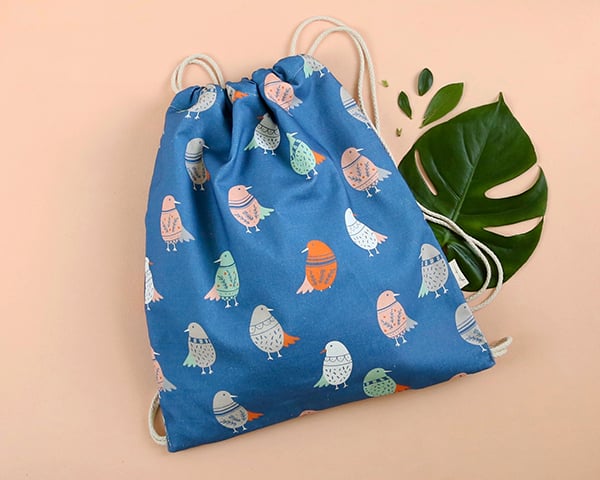 What projects or collaborations from last year stuck out, good or bad and what is coming up over this year that you would like to plug!
What projects or collaborations from last year stuck out, good or bad and what is coming up over this year that you would like to plug!
I loved being involved in some of the bigger design markets, such as Markit, Finders Keepers and Makers and Shakers market last year. It’s great to be amongst other creatives and interact with customers directly, even though I’m quite an introverted person. It’s a lot of work though, preparing for markets when you make everything yourself, so I haven’t planned any markets for this year so far.
I also really enjoyed working with Apiary Made on their range of beeswax wrap designs. It’s been great to work with a local business whose values sustainability and ethically made products. I have collaborated with another couple of brands, but I will share the details when the product comes out as I’m not sure when this will be happening. Licensing can be a bit of a tough road, but I’m hoping I get to work with more clients in the future.
Where would you like to see your work featured?
I would love to have my own range of fabric one day. I love the idea of seeing what people would make with my own fabric.
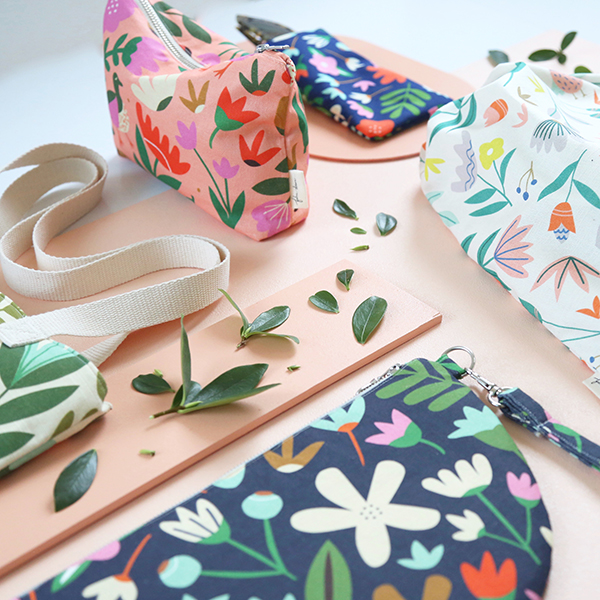 You can find out what Beck from Fabric Drawer is upto: Website, Facebook, Instagram
You can find out what Beck from Fabric Drawer is upto: Website, Facebook, Instagram
